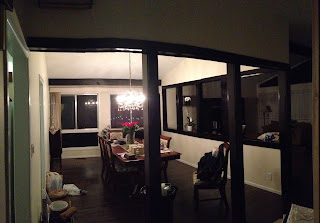Popular posts from this blog
Klaff Tanning question:
By
Rabbi Eli Gutnick
-
I received this question via email. I am not really a klaf expert, I was wondering if anyone could answer this question: Dear Rabbi Gutnick, I am writing to you because a good friend of mine has put the idea into my head that the klaf in my tefillin were not really tanned and therefore are not kosher. He referred me to Megilla 19a re diftera. From the research that I have done so far, it seems that the klaf that is used today is tanned only with a lime wash. On all of the tanning websites I’ve seen so far, they say that the lime doesn’t accomplish tanning but only the removal of the hair and some other pre-tanning effects. Would you be able to explain to me or refer me to a website that explains how the tanning process that is used today takes the hide out of the category of diftera? Thank you very much.
Rabbi Reuvain Mendlowitz clarifies his position on Ksav Chabad (and my final thoughts)
By
Rabbi Eli Gutnick
-
Last week I posted some thoughts in response to a public lecture given by Rabbi Reuvain Mendlowitz regarding Ksav Chabad (the Alter Rebbe's ksav). I felt he did not represent the issue fairly, and since I had received questions about it from a number of people I felt it made sense to write a general response. After I posted my response on this forum, Rabbi Mendlowitz reached out to me by email and we ended up having a respectful and productive email exchange regarding the relevant issues surrounding Ksav Chabad. His position is a lot clearer to me now, and I think he also took certain things on board that I clarified with him. The purpose of the Stam Forum (at least back in it's heyday before all the whats app groups took over) was to connect sofrim from around the world, to promote achdus and build bridges, as well as to offer support and advice. In that spirit, I felt I should write a follow up post, to clarify some of the issues and misconception...


They are patur, they are decorative only and not doorposts.
ReplyDeleteThis comment has been removed by the author.
DeleteThank you, but it strikes me as odd though for it possible a room should have no door/entrance way?
Deletein this case it seems patur however often the posts are set in a way that they resemble three enterances and then all need mezuzos.
ReplyDeleteThere is not Tzurat Hapetach here. There are two parallel walls with a place where the ceiling comes down. The columns are only there to hold up the ceiling not the create a doorway.
ReplyDeleteIt seems quite clear to me from this picture that had the builders been able to they would have preferred not to have these columns at all but they were necessary for structural reasons, not to divide the rooms.
I agree that this should be patur.
I was thinking about this a bit more. Let's say there would not be the two columns in the middle only the one on the right. We would probably put a Mezuzah. Assuming that is so, we should probably still put one at least there and disregard the other two columns which are only to hold up the ceiling.
ReplyDeleteR. Moshe, what do you think?
The one on the right is also only for structural reasons. It isn't a tzuras hapesach at all.
DeleteBut there is a wall 10 tefachim high on the right which makes gud asik and so perhaps the column is considered like it is the end of a solid wall. This is together with the ceiling descending which is considered like a mashkof.
DeleteAaron, look at the whole picture, it is obvious that the right column isn't a doorpost, but part of the decorative/structural build of this divider.
DeleteEven if considered an end of the right wall, still there is no doorpost from the right [since this column doesn't enclose any part of the petach] and definitly not from the left side.
Therefore this whole opening is patur.